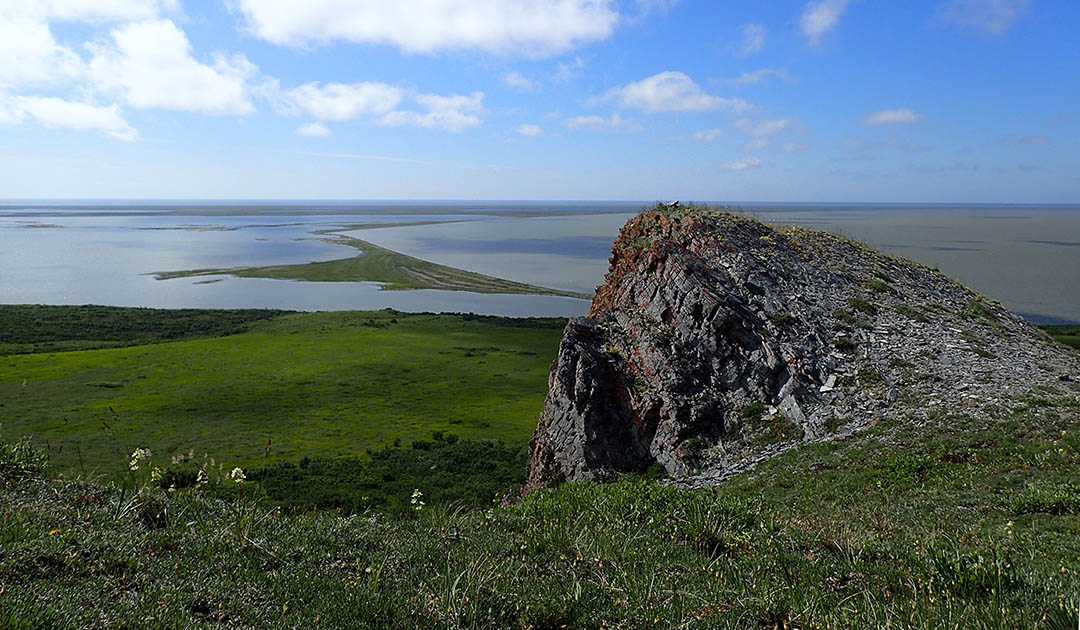
For more than 4,000 years, the Iñupiat people have lived on the coast of the Chukchi Sea in Alaska, relying on wild plants and animals for their sustenance. The landscape is characterized by lagoons teeming with life. Numerous species of fish and birds use the shallow waters as nesting and feeding areas. However, the unique and dynamic coastal lagoon ecosystems in the Arctic Beringia region may be threatened by climate change and human development, according to a review article led by the Wildlife Conservation Society (WCS).
The lagoons, which make up 40 percent of the Chukchi Sea coastline in Alaska, are vital places for the Iñupiat people, who gather plants and hunt wildlife here to ensure their food security. In addition, the lagoons are important components of several protected areas such as the Bering Land Bridge National Preserve, Cape Krusenstern National Monument, and the Alaska Maritime National Wildlife Refuge.
The recent WCS report, which appeared in the journal Arctic, captures the diverse wildlife that live or near the lagoons. Common fish species on which the Iñupiat also feed include sheefish (Stenodus nelma), Dolly Varden trout (Salvelinus malma), and saffron cod (Eleginus gracilis), commercially important chum salmon (Oncorhynchus keta), and Beringia-endemic species such as Bering cisco (Coregonus laurettae) and Alaska blackfish (Dallia pectoralis).

Birds such as tundra swans (Cygnus columbianus), Caspian terns (Hydroprogne caspia), Arctic terns (Sterna paradisaea), Sandhill cranes (Antigone canadensis), Long-tailed jaeger (Stercorarius longicaudus), and Glaucous gulls (Larus hyperboreus) forage around and in the lagoons and can also be seen nesting. Mammals also benefit from the lagoons’ abundant food supply, and muskoxen, caribou, grizzly bears, beavers, and marine mammals such as belugas and bearded seals often stay near or along the lagoons.
“This review is a culmination of a decade of fisheries monitoring and research efforts conducted by WCS and partners at these lagoons, and while there are still many aspects of these unique and important ecosystems to study, the article represents the best understanding of Arctic coastal lagoon structure and ecology to date,” said Dr. Kevin Fraley, lead author of the study and fisheries ecologist with WCS’s Arctic Beringia Program in Fairbanks, Alaska.

The researchers based their report on results of long-term fisheries monitoring and research trials in several lagoons in the three protected areas mentioned above. In addition, the Iñupiat also provided their traditional ecological knowledge of lagoon ecology and subsistence harvest practices.
One of their key findings was that water chemistry, physical layout, invertebrate diversity, and fish ecology (species diversity, abundance, behavior, feeding, and survival) in the lagoons depend on seasonal channels connecting the lagoons to the Chukchi Sea.
The research team concludes that human development of the region and climate change may have uneven, negative impacts on the ecology of the lagoons because the channels are narrow and thus vulnerable to disturbances such as coastal erosion, storms, and the reformation of beach gravel from natural and artificial impacts.
In the future, WCS plans to continue monitoring these fragile habitats to detect any environmental changes caused by anthropogenic or natural disturbances.
Julia Hager, PolarJournal
Link to the study: Fraley, M. K., et al. (2022) The Forgotten Coast: A Synthesis of Current Knowledge of Southern Chukchi Sea Lagoon Ecosystems. Arctic. doi.org/10.14430/arctic75608





